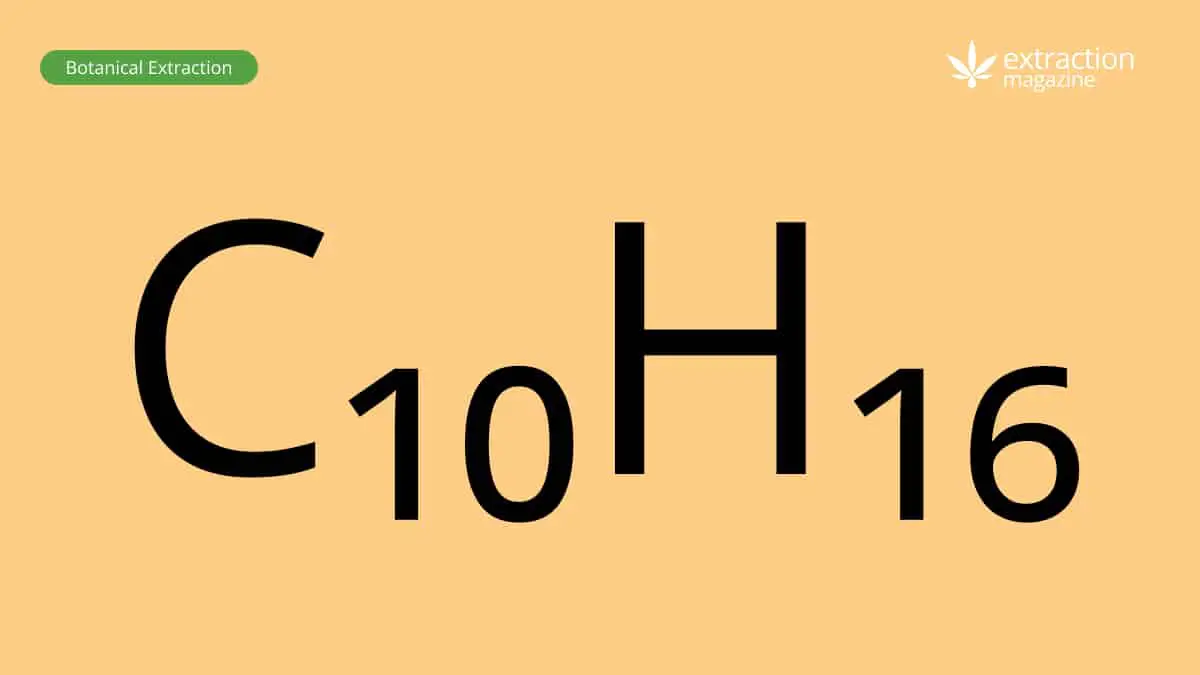Few people realize that myrcene occurs naturally in more than 200 plants worldwide, including cannabis. [1] This terpene belongs to the hydrocarbon fraction and is the most abundant terpene in modern commercial cannabis.
In fact, when laboratories test thousands of cannabis plants, myrcene represents more than 20% of the terpenes profile in commercial cannabis strains, even though individual samples often have variations in terms of terpenes content.
What Exactly Is Myrcene?
The most abundant terpene found in cannabis. Its earthy scent profile is recognizable to most, resembling a balsam fragrance with notes of musk and clove. To most people, it has a peppery or spicy taste with sweet undertones.
Some researchers theorize that together with other cannabis terpenes, they contribute to the overall potential therapeutic effect of cannabis, taking part in the entourage effect together with cannabinoids and other cannabis constituents. [2]
Will consuming myrcene get you high?
No, consuming it alone will not get someone high or make you exhibit any psychoactive symptoms. However, if you consume cannabis with myrcene as its dominant terpene, individuals can experience faster-acting and more powerful psychoactive effects.
Research surrounding the entourage effect has indicated that this stronger and more fast-acting high could be because myrcene plays a crucial role in facilitating the transport of cannabinoids into your brain.
What Are The Benefits Of Myrcene?
Anti-tumor potential
It has attracted a lot of attention for its potential anti-tumor capabilities, similar to other terpenes. According to recent studies, and can cause tumor cells to go through apoptosis or cell death while sparing cells that are healthy. [3]
Additionally, myrcene’s anti-inflammatory properties and antioxidant attributes are thought to play a role in the ability to prevent tumor growth and metastasis. These encouraging results demonstrate myrcene’s potential as a therapeutic cancer treatment agent.
Further research is required to fully comprehend the processes underlying myrcene’s anti-tumor capabilities and its safety and effectiveness in human subjects.
Sedative potential
In contemporary culture, cannabis strains with elevated levels of myrcene have been associated with inducing a phenomenon known as “couch lock,” characterized by sedation. Although empirical evidence validating these claims remains limited, a noteworthy study in 2002 indicated that it demonstrated sedative effects in mice when administered in high doses. [4]
The study highlighted that higher quantities of myrcene in cannabis could induce sedation and reduce locomotion in animal subjects. However, further research is essential to determine its effects on human subjects.
Diabetes treatment
Myrcene has also recently attracted interest due to its potential as a diabetes therapy. This terpene has anti-inflammatory and antioxidant capabilities, which may help reduce the chronic inflammation linked to diabetes.
Has reportedly shown promise in diabetes treatment capabilities by lowering blood glucose levels and enhancing insulin sensitivity in preclinical studies. [5] Its capacity to increase glucose uptake by cells may help in diabetic management.
What Are The Drawbacks Of Myrcene – The Wrap-Up
Evidently, it has many potential benefits, but that doesn’t mean this terpene is free from disadvantages. In fact, to some, myrcene is a dual-edged sword since its sedative effects, although beneficial in certain circumstances, can also be detrimental.
For example, although myrcene has positive sedative effects, these can also cause drowsiness and impair cognitive function, making daily tasks impossible – even for those who require this terpene for pain management.
Additionally, myrcene’s presence in cannabis can dominate and mask other desirable terpenes if the level is high enough, reducing the overall flavor complexity of the cannabis experience.
Moreover, some individuals may be sensitive to myrcene, experiencing adverse reactions like headaches or nausea.
That’s why, as with any cannabis compound, appropriate dosing and individual tolerance must be considered to ensure drawbacks are reduced and only therapeutic benefits are experienced.
References:
-
- Surendran, S., Qassadi, F., Surendran, G., Lilley, D., & Heinrich, M. (2021, June 9). Myrcene-what are the potential health benefits of this flavouring and aroma agent? Frontiers.
- Myrcene. Myrcene – an overview | ScienceDirect Topics. (n.d.).
- Surendran, S., Qassadi, F., Surendran, G., Lilley, D., & Heinrich, M. (2021b, July 19). Myrcene-what are the potential health benefits of this flavouring and aroma agent? Frontiers in nutrition.
- do Vale TG;Furtado EC;Santos JG;Viana GS; (n.d.). Central effects of citral, myrcene and limonene, constituents of essential oil chemotypes from Lippia Alba (mill.) N.E. Brown. Phytomedicine : international journal of phytotherapy and phytopharmacology.
- Yang, L., & Liao, M. (2021, October). Influence of myrcene on inflammation, matrix accumulation in the kidney tissues of streptozotocin-induced diabetic rat. Saudi Journal of biological sciences.
![]()

